You might like
“The nail matrix, the site of nail growth that hides a few millimeters underneath the cuticle, is affected by each individual’s general state of health,” says Jessica Weiser, M.D., board-certified dermatologist at New York Dermatology Group. “Illness, fever, surgery, trauma, life stressors, and nutritional deficiencies all have different effects on the nails and their growth.”
To clue you in to everything your nails might be telling you about your body—from the minor to the more serious—watch for these nine things.

Seasonal changes can impact your mood and energy levels. Bezzy Depression is a community with discussion forums and live chats where you can connect with those who know exactly what you’re going through.
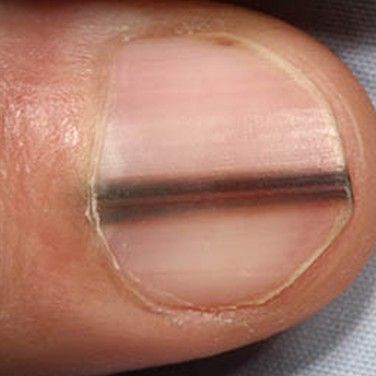
1. Brownish Stripes
Possible Cause: MelanomaJust like you regularly check your skin for moles, you should also keep an eye out for weird color changes in your nails. Melanoma, the most serious type of skin cancer, can pop up in your oft-exposed nail beds and go undetected. Any sort of asymmetric pigmentation can be a sign of skin cancer, but melanoma on nails (called subungual melanoma) usually looks like a pigmented vertical band stretching upward from the cuticle.Subungual melanoma: a review of current treatment. Cochran AM, Buchanan PJ, Bueno RA. Plastic and reconstructive surgery, 2014, Oct.;134(2):1529-4242.” data-widget=”linkrefIf a brownish streak on your nail bed shows up suddenly or changes in appearance, see a dermatologist as soon as possible, Weiser says. “If pigmented bands appear on several nails, this can be a sign of a normal variant, but you should still see a doctor to be sure.”
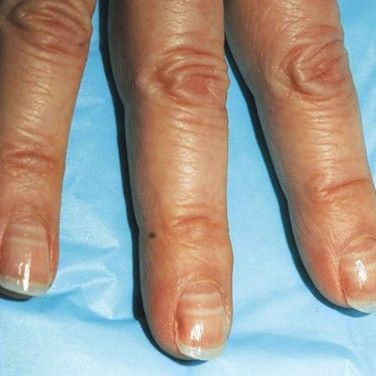
2. White Lines
Possible Cause: Nutrient Deficiency Horizontal white streaks spanning the nail are called Muehrcke’s lines. The likely cause: a protein or zinc deficiency.Nutrition and nail disease. Cashman MW, Sloan SB. Clinics in dermatology, 2010, Oct.;28(4):1879-1131.” data-widget=”linkref “These lines signal that segment of the nail had an interruption while growing and didn’t get all the nutrients or blood flow it needed,” says Niket Sonpal, M.D., assistant clinical professor at Touro College of Medicine in New York.Check in with your doc to make sure you’re getting the correct daily amount. Daily protein intake depends on your weight and activity level (you can calculate how much you need here). As for zinc, the recommended daily amount is 11 grams for women and eight grams for men. In rarer cases, Muehrcke’s lines could signal more serious issues, including kidney disease or liver problems.
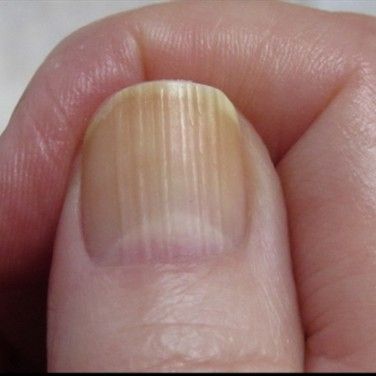
3. Vertical Ridges
Possible Cause: AgeIf you notice vertical ridges and roughness appearing in your nails that you didn’t have a few years ago, it’s probably nothing more than a side effect of aging. “They’re analogous to getting wrinkles in your skin,” Sonpal says, who adds that we usually don’t notice these until around age 50. If the ridges seem particularly severe, or they pop up out of the blue, check in with your doctor to make sure there’s not something else at play.
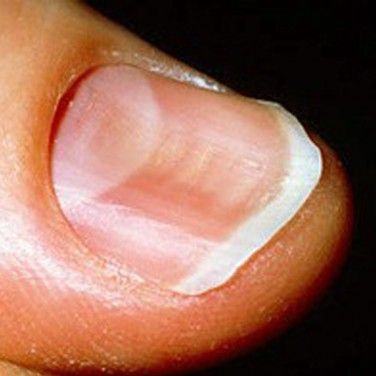
4. Concave, Spoon-Shaped Nails
Possible Cause: Iron Deficiency or AnemiaThis nail deformity is not subtle, and definitely weird-looking enough to catch your attention. Koilonychia, known as “spoon nails,” are most commonly due to an iron deficiency.Images in emergency medicine. Koilonychia, or spoon-shaped nails nails, is generally associated with iron-deficiency anemia. Kumar G, Vaidyanathan L, Stead LG. Annals of emergency medicine, 2007, Feb.;49(2):1097-6760.” data-widget=”linkrefIn this case, the nail gets so thin that it actually becomes concave (as if it could hold a drop of water).If you notice this, have some lab work drawn to determine if anemia is the issue, Weiser says. If you are iron deficient, your doc will probably recommend an iron supplement. Other causes include working with petroleum-based products or trauma. In very rare circumstances, koilonychia can be associated with thyroid disease and heart conditions.
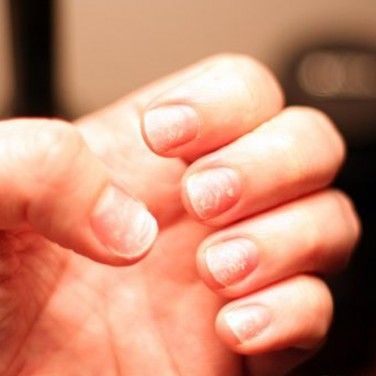
5. Brittle or Dry Nails
Possible Cause: External FactorsCracked, dry, and brittle nails that break easily aren’t out of the ordinary—and probably a major reason why so many people stock up on nail-boosting supplements like biotin. Once in a while, brittle nails are normal, Sonpal says. If you’re a regular at the nail salon or working with water or cleaning supplies all the time, dry, cracking nails aren’t that unusual.But if brittle nails are becoming a regular trend, then speak to your primary doctor and have your thyroid checked, since chronically brittle nails can be a sign of hypothyroidism.
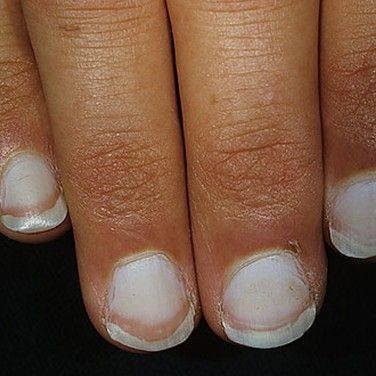
6. Huge Half-Moons
Possible Cause: Renal Failure or Liver DiseaseEveryone has little white half-moons at the base of the nails, but how big they are can clue you into some serious health issues. If they take over half the nail bed, it could be a signal of renal failure, which tends to occur in people who have diabetes or high blood pressure.If the moons extend two thirds up the nail bed, they’re called Terry’s nails, and you’ve got another issue. “Terry’s nails are classically associated with liver failure,” says Jennifer Chen, M.D., clinical assistant professor at Stanford School of Medicine. Liver failure is pretty serious, and treatment depends on the underlying cause. Certain liver problems might be easy to fix with a lifestyle change, such as cutting out alcohol or losing weight, while others might require medication or surgery. Either way, it’s important to see your doctor.
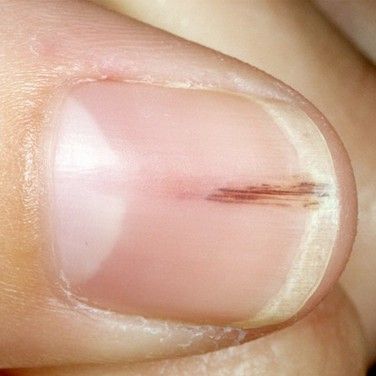
7. Red Streaks
Possible Cause: Heart Condition Bloody-looking streaks on your nail bed are not normal (unless you’ve just slammed a finger in a car door). Little longitudinal lines of blood—especially on the half of the nail closest to your body— are called splinter hemorrhages. They can indicate a heart infection affecting the valves or inner lining of the heart, Chen says.Heart infection, or endocarditis, is
Preferred by 94% of users
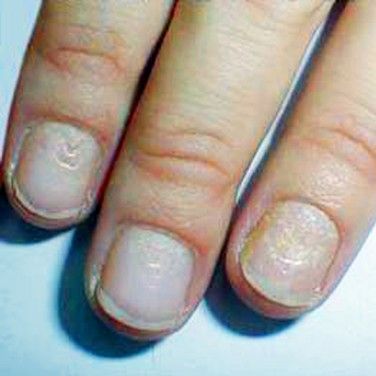
8. Pitted Nails
Possible Cause: PsoriasisLittle dents and tiny craters in the nails are known as “pitting” and are often a symptom of psoriasis, a chronic skin condition that causes an itchy, scaly rash. But this particular symptom could mean more complications later on. “When you see nail involvement with psoriasis, it’s associated with a higher instance of arthritis down the road,” Chen says. Typically, pitting occurs in around half of people with psoriasis and 80 percent of people with psoriatic arthritis, she adds.Dented nails can also be a sign of alopecia areata, an autoimmune condition that causes you to lose your hair, Weiser says. If you’re not already being treated for psoriasis, see a derm to figure out what’s going on.
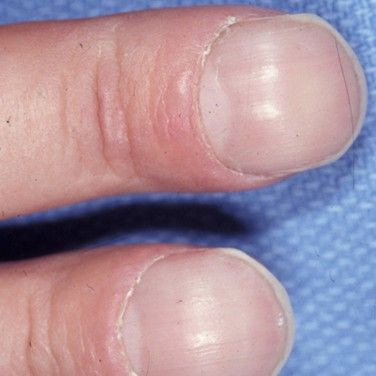
9. Rounded or “Clubbed” Edges
Possible Cause: Pulmonary ProblemsIf the nail looks curved and rounded (like an overturned spoon) and fingertips look swollen, it could signify an issue called clubbing. “Clubbing is classically the result of a wide variety of lung conditions that cause lower-than-normal oxygen levels in the blood,” Weiser says. Lung cancer is the most common cause, but it can also be associated with an overactive thyroid or liver disease. Just remember: Clubbing is not a normal finding and should always be evaluated by a doctor to determine the underlying cause.



